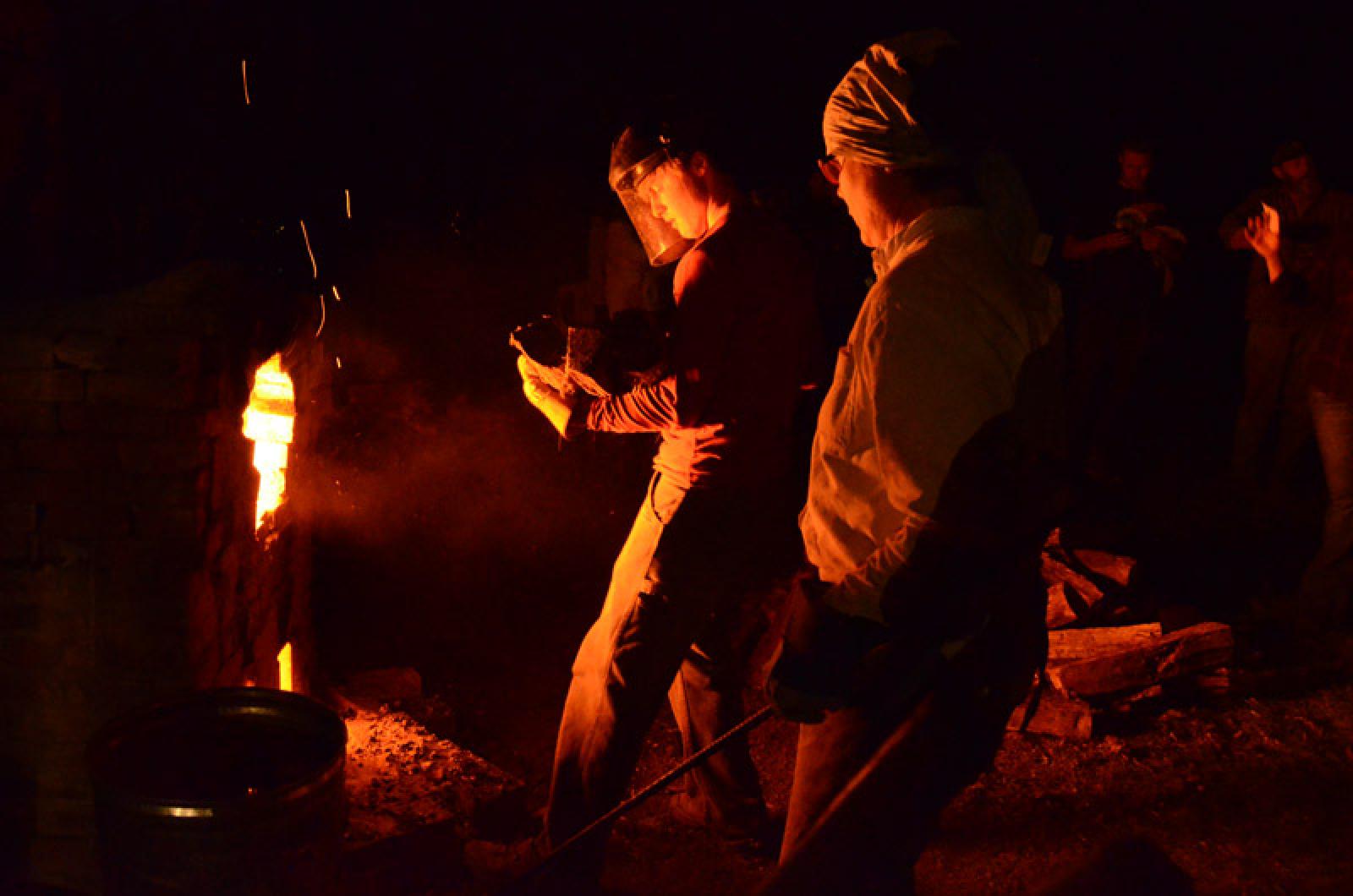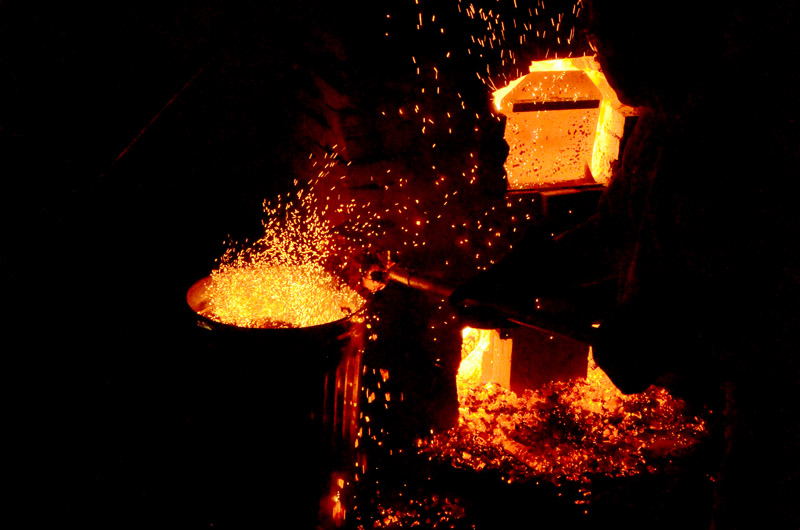Friday, Sept. 23, 8 a.m. The Dragon was loaded with pots. It was quiet, cold and dark. By the end of Friday evening, it was roaring with fire, flames and heat. The Dragon would continue to roar as volunteers fed its flames. By late Saturday evening, it had consumed five cords of wood. The wood-fired kiln (also known as the Dragon) at Featherstone Center for the Arts was built as a labor of love by Sharry Stevens-Grunden. Sharry built it based on a design by Michael Cardew, a renowned ceramic artist and author of Pioneer Pottery. Scott Campbell, a retired art teacher from the Martha’s Vineyard Regional High School, led approximately 25 volunteers last weekend in the firing of the kiln. The kiln is fired annually; this was Scott’s 16th firing. “His upbeat attitude made it happen and kept us inspired,” said Heather Goff, a stalwart volunteer.
Heather should know; she, along with several hardy souls, kept the Dragon well fed. Rotating teams of two, three and four were necessary for this marathon. One of Scott’s former students, Nathaniel Edmunds, traveled from Portland, Me., to help. Mr. Edmunds now teaches art and design in Portland. Mindy Sahner came from western Massachusetts to join in feeding the flames. Twenty-five years ago, she left a career as a ceramic artist to pursue a career in interior design. This past summer, she came back to pottery. “Because of this place, it was possible,” she said.
Luke Nivala, the youngest member of the fire-feeding team at age 14, petitioned his mother to let him stay when his shift was up. “I don’t want to leave. I love it,” he said. Luke stayed. Father and daughter team David and Sabrina Kuchta played an integral part in the firing. Sabrina is the ceramics studio manager at Featherstone. With camera in hand, she documented the smoke, sparks and flames. She also hid a dragon inside the Dragon.
A few weeks before the firing, word goes out to potters across the Island to get pieces ready for the wood-fired kiln. Scott Campbell also offered a wood-firing class, and Featherstone made available low-fire clay for artists to form pieces. The pieces were first fired in an electric kiln at Featherstone. At this point, any artists who wanted their creations to hold water applied a low-fire glaze. But most left their pieces as they were to see how the fire and ash would glaze the clay, a process called flash firing. “The uncertainty is part of what makes it so exciting,” said Nancy Blank, an art teacher at Featherstone. “How hot will the kiln get? What will the pieces look like?” The kiln is hot: A low fire reaches approximately 1,900 to 2,100 degrees Fahrenheit; a high fire is 2,200 degrees or hotter.

The wood kiln is loaded and the loading wall is bricked up. Fires in the four-firebox, round sprung-barrel dome kiln are started, and the Dragon comes to life. Two to four people are needed for the entire two-day process of keeping the fire going to get the kiln up to a high enough temperature to fire the finish on the pots inside. After the last log is loaded into the kiln, the fireboxes are sealed and the Dragon slowly goes to sleep. Three days are needed to allow the kiln to cool enough to take out the pots.
Out of the sleeping Dragon emerge one-of-a kind pottery pieces, never to be duplicated, burned in the flames. As the kiln was emptied of its hidden treasure, metallic grays, browns and golds, flashed, reminding us of the heat.
Lisa Nivala lives in Vineyard Haven.





Comments
Comment policy »